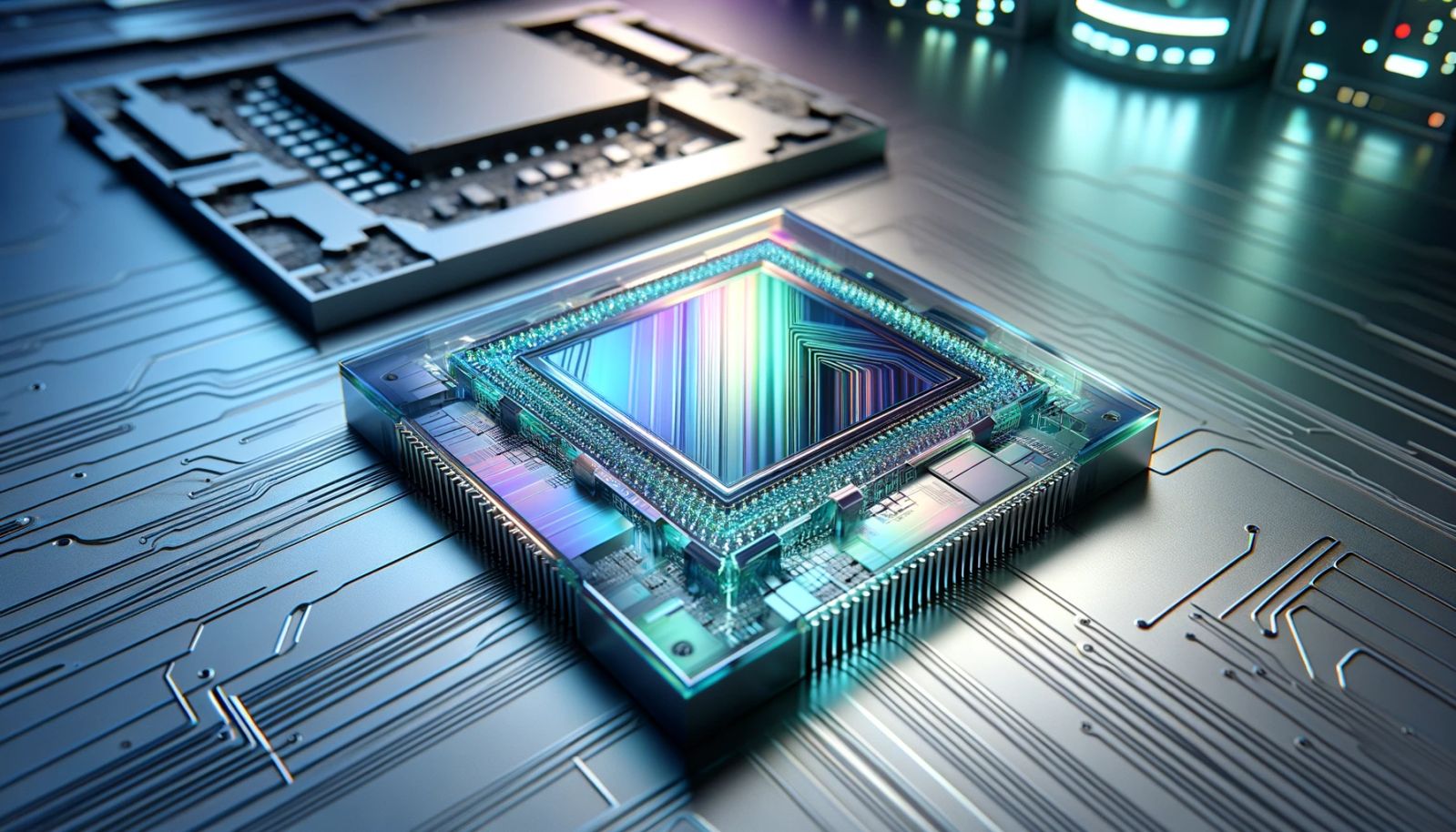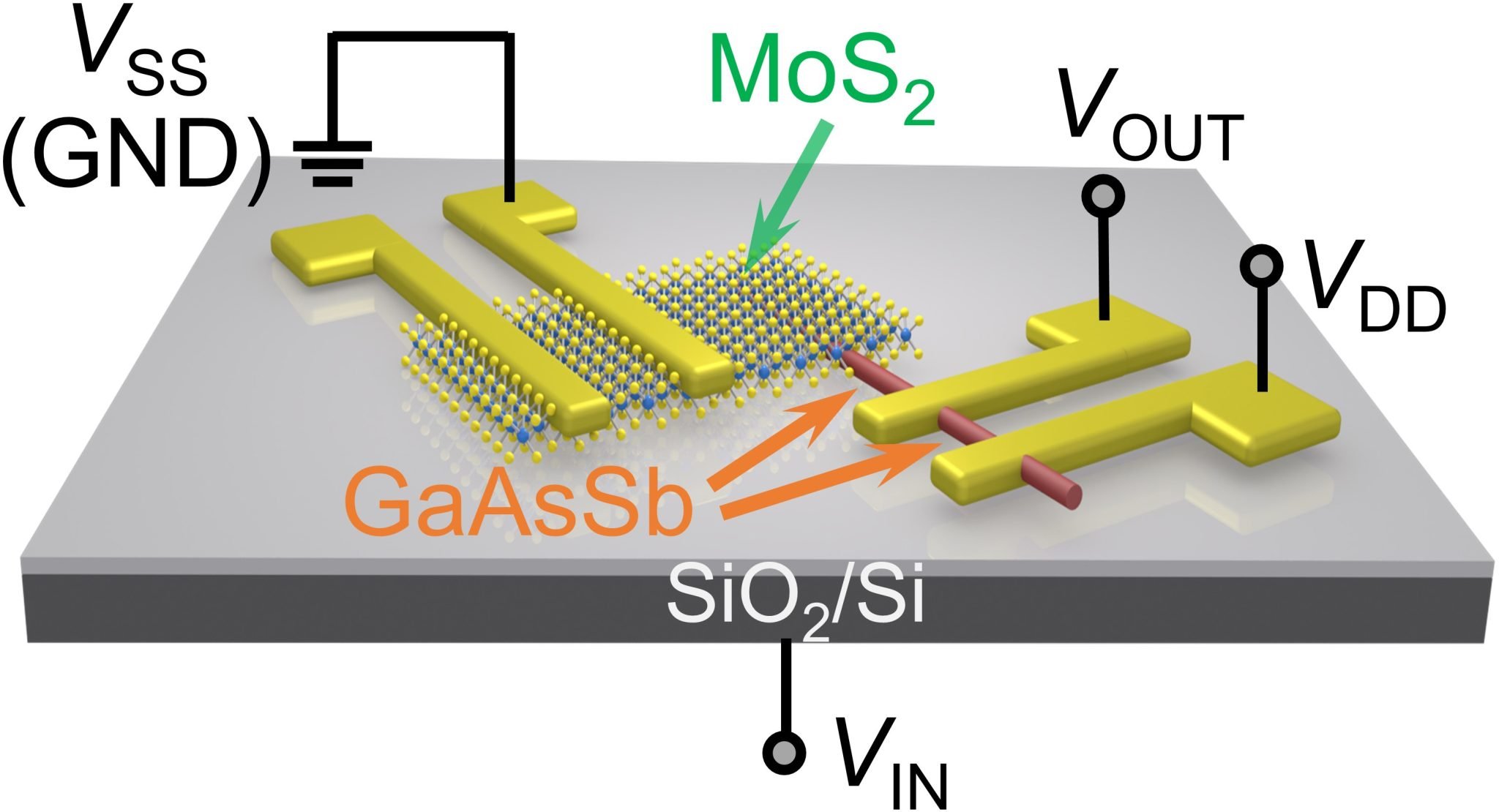Follow us on Google News (click on ☆)

Today's relentless quest to make electronic components ever smaller is now facing physical and economic barriers that are difficult to overcome. Extreme miniaturization causes problems such as increased current leakage and, consequently, higher energy consumption. To bypass these hurdles, researchers have turned to an innovative approach: the use of Multiple-Valued Logic (MVL). This concept reduces the number of components needed in a circuit, offering a solution to the issue of energy consumption.
The heart of this innovation lies in the creation of anti-ambipolar transistors, a type of transistor that allows for the simultaneous transport of positive and negative charges, thanks to a unique combination of nanowires and nanosheets. Achieved through an advanced chemical vapor deposition technique, this combination results in devices with exceptional performance.

Schematic of a Ternary Inverter Based on the GaAsSb/MoS2 Heterojunction.
Credit: Professor Johnny Ho's Research Group / City University of Hong Kong
These new transistors are particularly noteworthy for their remarkable anti-ambipolar transfer characteristics, including the ability to double the frequency of input signals. This property reduces the need for additional devices and greatly simplifies circuit design, contributing to a significant reduction in energy consumption.
This breakthrough marks a turning point in semiconductor research, offering a viable alternative to traditional miniaturization. It perfectly illustrates how innovation in material science can lead to sustainable and efficient technological solutions, capable of meeting the challenges of modern electronics.